It’s a common question – Do Backup Cameras Record? Especially as more vehicles roll off the line equipped with advanced camera tech.
No, most backup cameras don’t record. They only show a live view to help you reverse safely. Unlike dash cams, they don’t save footage. So, if there’s an accident, you won’t have video proof from your backup camera. Some modern vehicles do include recording features, but it’s still not common.
If you want a recording, you’ll need to upgrade. Dash cams or smart rearview mirror systems can capture and store footage while driving. These options provide better coverage and peace of mind. Knowing what your camera can and can’t do is key to staying protected on the road.
In this post, we’ll explain exactly what backup cameras do, how dash cams work differently, and what you need to stay safe and protected while driving. Knowing this helps you make smarter choices for your car’s safety.
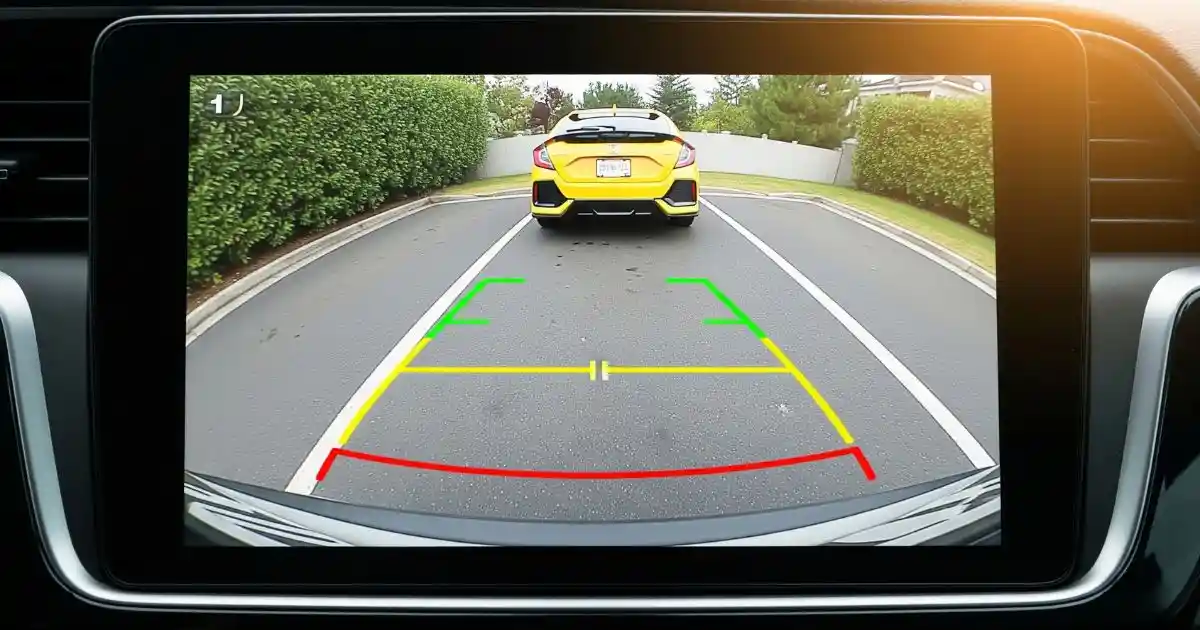
Quick Navigation & Previews
What Is a Backup Camera?
A backup camera is designed to help drivers park safely and avoid obstacles by offering a live video feed when the car is in reverse. It’s usually mounted at the rear bumper and activates automatically.
However, most factory-installed systems do not save any footage.
Some exceptions include premium models and aftermarket kits with DVR capabilities. If you want a camera with more than just a live feed, check out the Best Backup Camera with Sensors.
What Is a Dash Cam and How Does It Work?
A dash cam is built for one thing: recording video while you drive. These compact devices are usually mounted on the windshield and automatically record footage of the road ahead and sometimes behind. They’re now a must-have tool for drivers who want protection, evidence, and peace of mind.
Modern dash cams come packed with advanced features that enhance safety, security, and convenience. Here’s a breakdown of the most important ones:
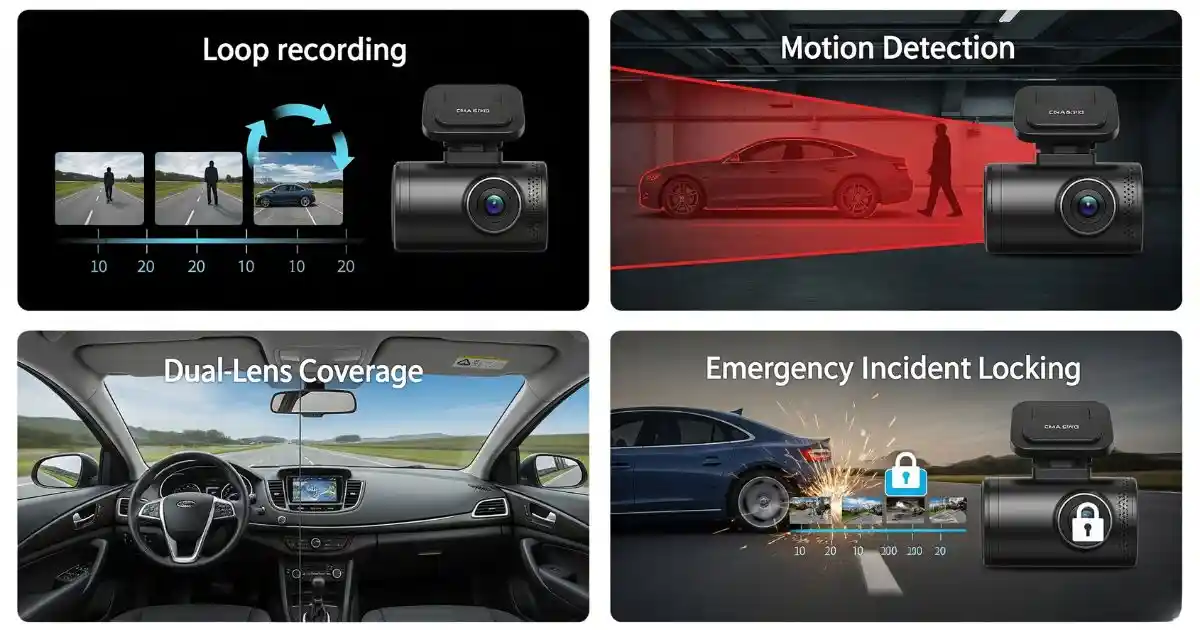
Loop Recording
Loop recording allows continuous video capture without running out of memory. The camera saves footage in small files (typically 1 to 5 minutes long). Once the storage card is full, it begins to overwrite the oldest videos with new recordings. This ensures you never miss a moment while maintaining only the most recent and relevant footage.
Motion Detection
When motion detection is enabled, your dash cam can act like a security camera while parked. It uses built-in sensors to detect movement in or around the vehicle and starts recording instantly. This feature is perfect for capturing vandalism, attempted theft, or hit-and-run damage in parking lots, even when you’re not in the car.
Front and Rear Dual-Lens Coverage
Dual-lens dash cams come with two cameras, one facing forward and one facing the rear. This provides complete coverage of both directions, recording incidents that happen in front, like sudden stops, and behind, such as tailgating or rear-end collisions. Some models also offer interior-facing lenses, great for rideshare drivers.
Emergency Incident Locking
Built-in G-sensors automatically detect sudden impacts, hard braking, or collisions. When triggered, the dash cam immediately locks and protects the video clip, preventing it from being deleted or overwritten during loop recording. This preserved footage can serve as critical evidence for police reports or insurance claims.
Additional Features
Many newer models also include:
- GPS tracking to log your driving route and speed.
- Wi-Fi connectivity to view and transfer footage to your phone easily.
- Voice control for hands-free operation.
- Night vision with infrared sensors or Sony STARVIS technology, allowing clear footage in low-light or nighttime driving conditions.
Want more advanced options? Our guide on the Best Rear View Mirror Camera shows cameras that act as both dash cams and reverse monitors.
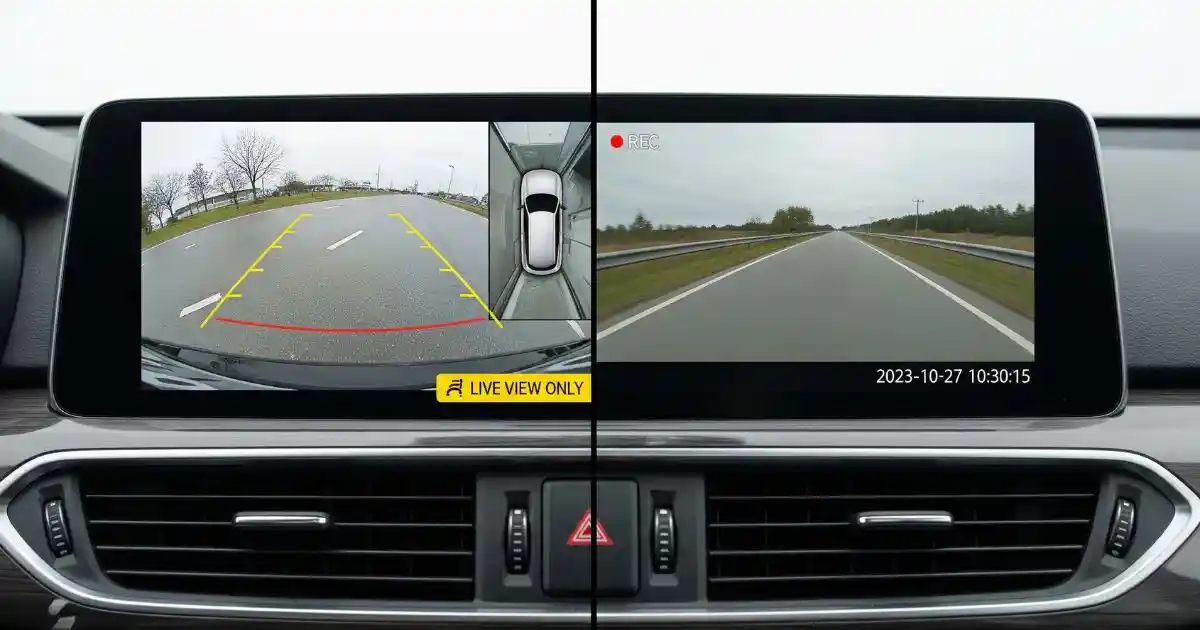
Do Backup Cameras Record Like Dash Cams?
Here’s the big difference:
- Backup Cameras: Live view only (in most vehicles)
- Dash Cams: Always recording while driving or parked (with motion detection)
If you’re wondering whether rearview cameras record or whether backup cameras on cars record accidents, the truth is that they do not unless they’ve been upgraded to a vehicle camera recording system.
On the other hand, dash cams are specifically designed to capture footage before, during, and after incidents.
Can You Make a Backup Camera Record?
Yes, you can but you’ll need extra hardware. Some options include:
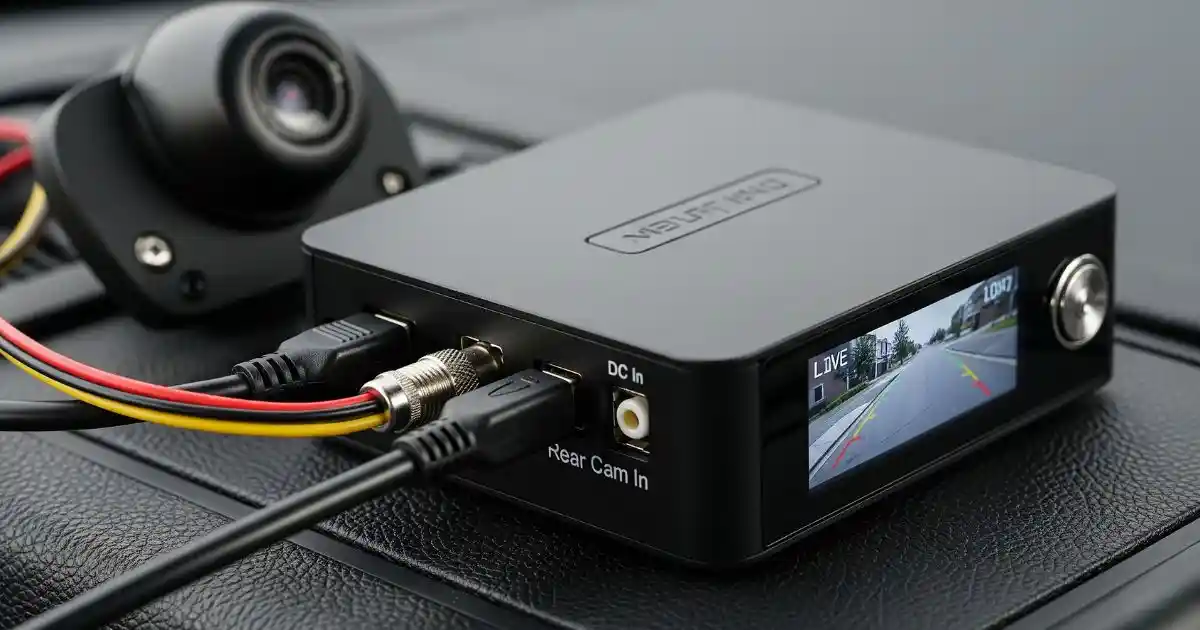
1. Add a Digital Video Recorder (DVR)
Installing a DVR is one of the most reliable solutions. A DVR can be connected to your backup camera and will continuously or selectively record footage. Some systems even allow you to install a multi-channel DVR that records both front and rear views. Make sure the DVR supports video input from a rear camera and has storage options like an SD card or hard drive.
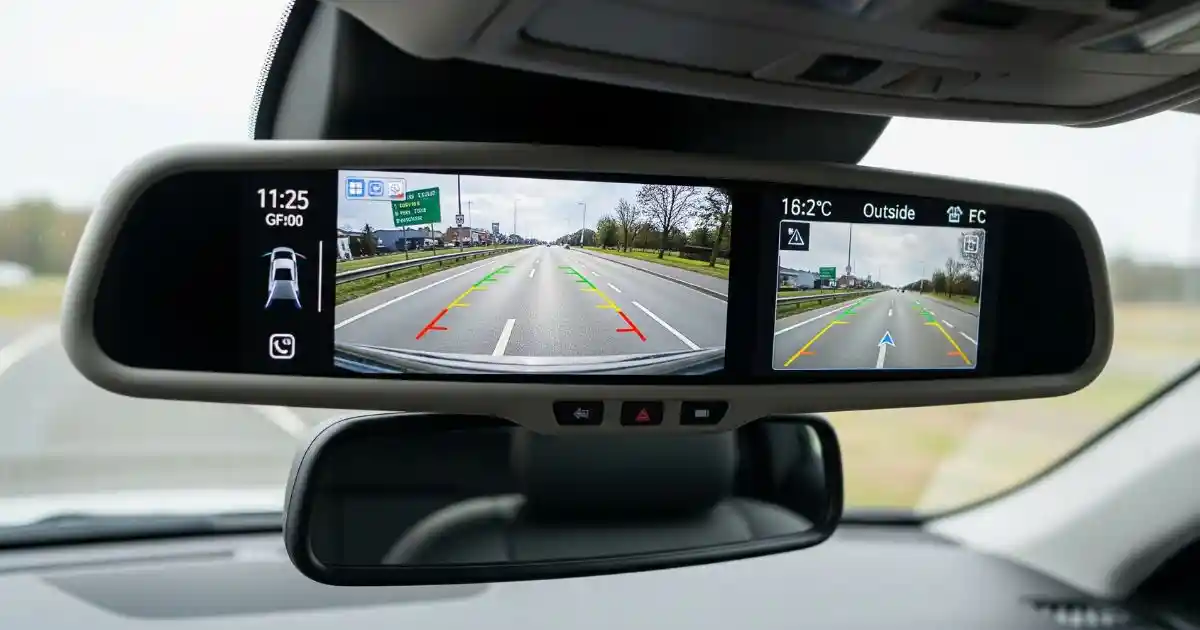
2. Install a Smart Rearview Mirror with Built-in Memory
This is a popular option because it gives you recording functionality without needing multiple separate devices. Step-by-Step Installation Guide
Choose the Right Smart Rearview Mirror
Look for one that includes:
- Front and rear cameras
- SD card storage or internal memory
- Loop recording and G-sensor support
Check Compatibility with Your Vehicle
- Make sure the mirror fits over your existing rearview mirror.
- Confirm voltage and wiring compatibility (usually 12V).
Mount the Smart Mirror
- Use the provided rubber straps or brackets to secure the smart mirror on top of your current rearview mirror.
Install the Rear Camera
- Mount the rear camera above the license plate or on the rear windshield (as instructed).
- Run the cable through the vehicle’s trim to the front of the car and plug it into the smart mirror.
Connect Power Supply
- Plug the power adapter into the 12V socket (cigarette lighter port).
- Or, hardwire it using a fuse tap for cleaner installation and parking mode recording.
Insert Memory Card
- Use a Class 10 microSD card (usually up to 128GB or 256GB).
- Format the card through the mirror settings menu.
Adjust Settings
- Set up loop recording, date/time, G-sensor sensitivity, and parking mode.
- Test both front and rear camera views before finalizing setup.
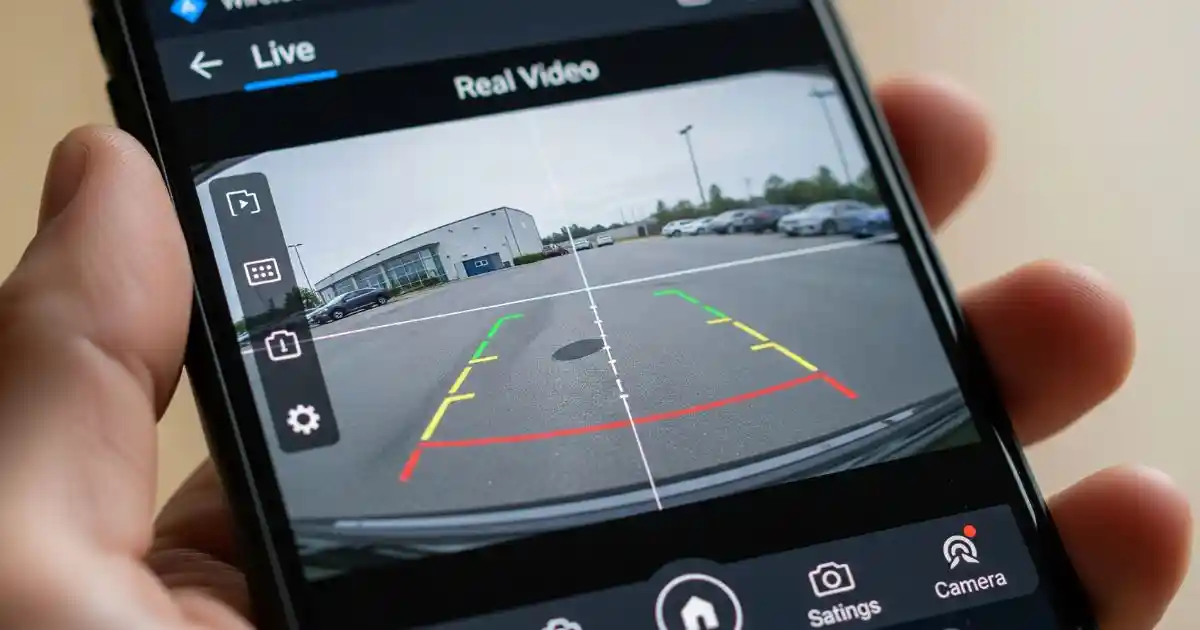
3. Use a Wireless Backup Camera System with Mobile App Support
Great for older vehicles or if you want a minimal-wiring solution. Step-by-Step Installation Guide
Choose a Compatible Wireless Backup Camera
Look for features like:
- Wi-Fi or Bluetooth connection
- Mobile app support (iOS & Android)
- Cloud/local recording options
Install the Camera
- Mount it above the license plate or rear window.
- Some are solar-powered, others need wiring to your reverse light (for power).
Download the Manufacturer’s App
- Find the app name from the instruction manual or box.
- Install it from Google Play or the App Store.
Connect Camera to Phone
- Power on the camera (via reverse gear or constant power).
- Open Wi-Fi settings on your phone and connect to the camera’s signal.
- Open the app to view the live feed.
Enable Recording (if supported)
- In the app settings, enable video recording.
- Choose where to save files (phone storage or microSD, if camera has one).
- Some apps allow motion-triggered or manual recording.
Test the System
- Reverse your car to activate the camera and ensure it connects smoothly.
- Confirm video clarity, signal strength, and recording functionality.
Looking for iPhone-friendly models? See our picks for the Best Wireless Backup Camera for iPhone.
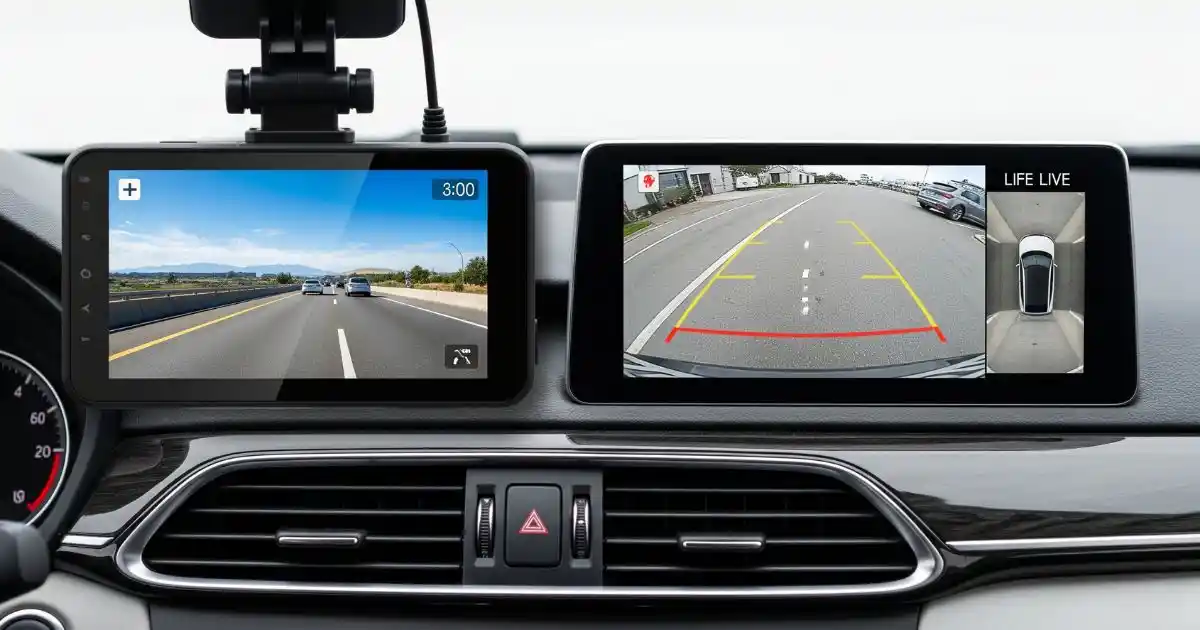
Do Car Cameras Record All the Time?
Only dash cams have this feature thanks to loop recording and G-sensors. So if you’re asking, do car cameras record all the time? You need a setup that includes a dedicated dash cam.
Things to consider:
- Power Source: Hardwired = 24/7 recording
- Memory: Bigger SD cards = longer footage history
Should You Use Both?
Absolutely. A backup camera gives you real-time visuals, while a dash cam captures the entire journey.
If you want a true dual-function system, check out our list of Best GPS with Backup Camera. Some models include both features in one compact unit.
Conclusion
So, does a backup camera record footage? Not unless you’ve added the right gear. Dash cams, on the other hand, are built for continuous recording, making them ideal for evidence, safety, and peace of mind.
Want full coverage? Use a backup camera for live reversing and a dash cam to document everything else.
FAQs
1. Does a rear-view camera record?
Not unless it’s part of a system that includes DVR functionality.
2. Can I turn my backup camera into a dash cam?
No, but you can add a DVR to make it record or use a mirror cam with built-in storage.
3. What’s the best dash cam that records front and rear?
Try a smart rearview mirror model, which provides full visual coverage without clutter.
4. Will my backup camera save footage during a crash?
Only if it’s recording at the time, most stock systems don’t offer this feature.
Leave a Reply